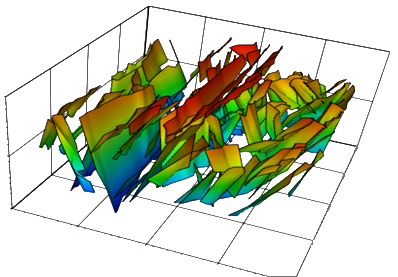April 2017
19th International Conference on Finite Elements in Flow Problems, Rome, Italy
Modelling Discrete Fracture Networks (DFN's) - Efficient gridding and discretization of discrete fracture networks as lower dimensional objects
AUTHORS
Mayur Pal, Sandip N. Jadhav, Rohit Chavan, Sadashiv Khadilkar

Abstract
Subsurface geological formations are often very complex due to presence of heterogeneity and fault/fracture systems. Modelling of fluid flow through such geologically complex fractured systems is required to model multi-physics processes like, e.g., environmental flow, CO2 sequestration, Oil and Gas flows etc. Using traditional modelling approaches, based on dual-porosity/dual permeability medium, to model such complex systems is often complicated and could result in incorrect flow patterns. Precise and efficient modelling of such complex fractured networks requires fractures to be represented as lower dimensional objects (1D lineament for 2D problems, and 2D planar objects for 3D problems), which requires efficient gridding and better numerical discretization techniques.
Discrete fracture networks usually involve very high or very low angle fracture-fracture intersections and sometime presence of small to very large length scale fracture networks. Numerical modelling of such a complex system is challenging, both, from gridding and numerical discretization point of view. In last decade alone modelling of flow through discrete fracture systems has attracted attention from a number of researchers. As a result few new gridding and discretization techniques have been proposed to model flow through discrete fracture network systems (DFNs).
In this paper we will present an in-house tool, which has been developed with advance gridding techniques to mesh complex discrete fracture network at small and very large length scales. Tool is also planned to include advance numerical discretization, and upscaling capabilities. The tool will enable modelling of geologically complex discrete fracture networks as lower dimensional objects. We will also try to demonstrate the use of the tool for modelling problems related to flow of hydrocarbons in the fractured reservoirs.
Want to know more about this work ?




